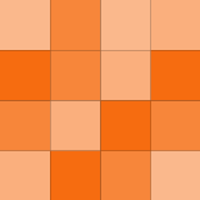I agree, and that is a design flaw in the morality system we went with - and arguably, hurts role-playing. In design, you should be rewarding the player (in different ways) for interacting with the game, not just “choose all the good options and you get all the good superpowers.” Middle of the road characters should…

That’s tough, and depends on publisher and developer (and the franchise). And I don’t have a preference on story styles as long as they are good (I enjoy Game of Thrones and Downton Abbey both). While you can chafe under parameters, parameters can make a story even better than you intended because of the constraints.
It was mostly internal pressure (well, except in the first few months when we were trying to generate a story when we didn’t have access to the first game - when that happened, LucasArts came back to us and said, “it needs to be more like K1” which we agreed with - I think the first iteration of the story was pretty…
It depends on the project, and the design position - as an example, system samples are much different than narrative samples, and even with narrative samples, those can vary widely depending on the position (say, writing for South Park vs. Tides of Numenera vs. FTL vs. well, you get the idea). The big issue for…
You can’t argue with a Bozar. Well, you can, but... well, you’ll lose.
Would love to, I believe we were there last year, and will likely go again. If so, see you there!
That’s a better answer. Approaching each NPC you write with “what do they want and how will they get it from the PC” is great. /Respectful Bow
Travis Stout (one of the designers) is great. (He worked on Dungeon Siege III, South Park, Old World Blues, New Vegas, and more.) He’s also a much, much better writer than me.
Probably not, unless it was delivered by a lawyer. :/ I can discuss the concepts in general, although that could be a long series of points (some major things: asynchronous intel sharing and disinformation to affect missions, hubs-within-hubs to solve core missions, and lots more colorful characters - more Heck and…
Choose high Wisdom Nameless One, and discuss with your antagonist at the end - the high Wisdom answer is mine. :)
I love doing area design (making dungeons and layouts is a lot of fun for me, and reminds me of my old college architecture days) and I dread writing dialogue, strangely enough. I feel like as soon as I start writing dialogue, the character and the intended audience are already judging me. :/
We were pretty surprised (or at least I was) that the narrative passed muster. I think we got only 5-6 comments on the story, and one was a misspelled name (Atton) and another comment was “the Devaronian’s horns are too long in the character model.” That said, while it was dark, I feel like all the designers had done…
You may want to ask the Lead Producer on Tides of Numenera, Kevin Saunders - he likely knows more than I (he was the area designer for it).
I... I... wait, are you offering this? Call me! Now.
JRPG narratives, while linear, are usually stronger for it (Final Fantasy III and VII and Chronotrigger all had brave choices in them). Also, I think JRPGs are better about introduction of companions and letting them shine without you getting too attached to one person at the outset to the detriment of anyone you meet…
Not to shoot myself in the foot, but I prefer visual storytelling and like how Fallout 3 did it. We tried to practice that (although arguably by necessity) in the area design in NV: Old World Blues, especially the sites where the major NPCs had been and the scientist’s houses in Higgs Village. I think visual…
We didn’t make the universe (that was thanks to TSR - Zeb Cook and co, plus the array of designers - Colin McComb, Monte Cook, and more), so we already had a solid foundation to work with. We just put a story on top of it, and because almost ANY story works in the Planescape universe and physics (systems and…
Make a high Wisdom Nameless One and reach the end of Torment, and the answer provided is the one I would give. :)
HK Planet = Time and resources. (Do you mean Droid Planet or the HK factory on Telos?)
It was pretty influential, especially drawing isometric maps (which I did for Fallout 2 and as recently as Wasteland 2, actually). And I absolutely think writing for PNP is a way to transfer into video game writing.



